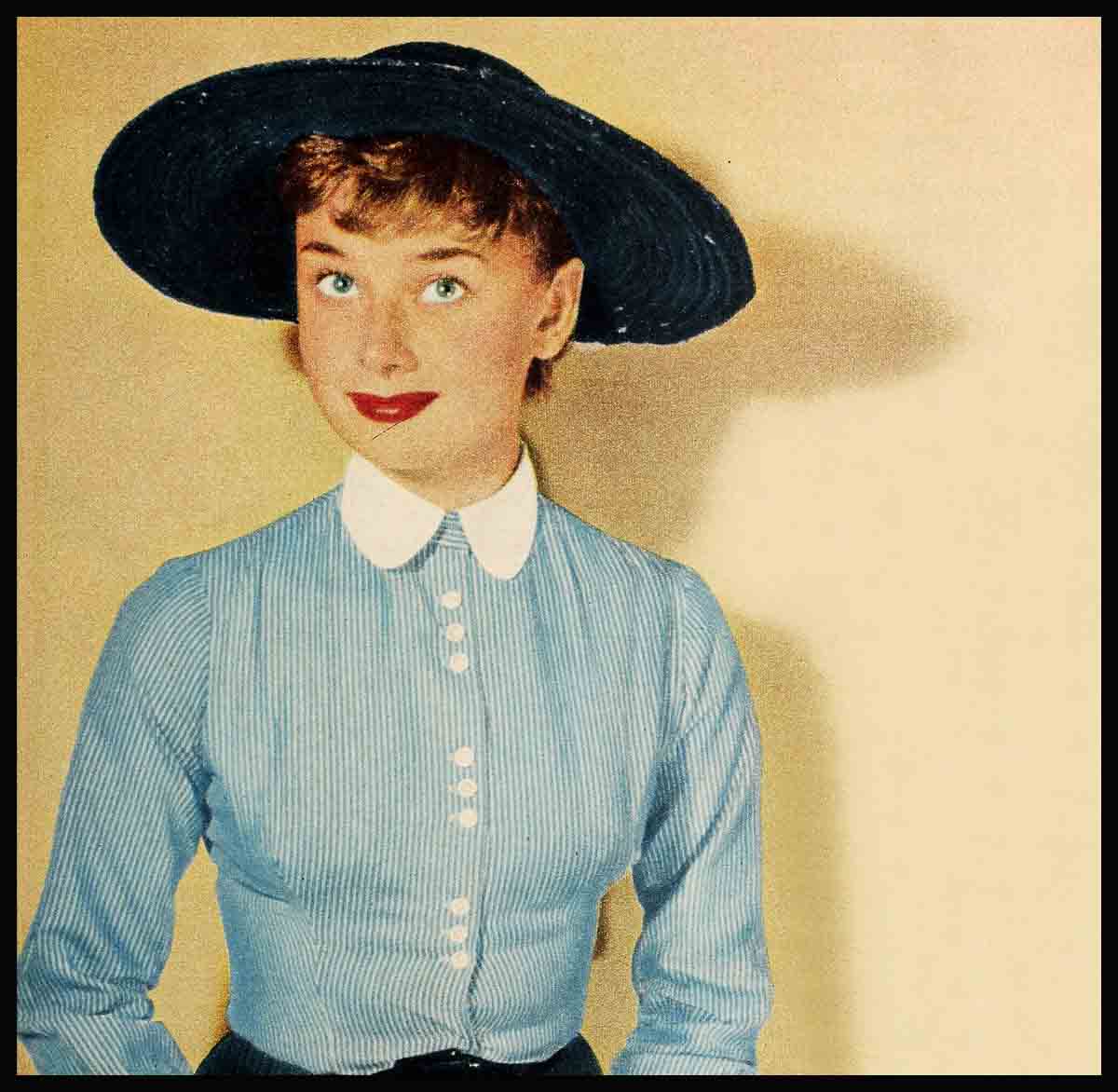
Audrey Hepburn On The Run
No one since Roger Bannister has run so conspicuously as Audrey Hepburn did during her Paris holiday. From the moment she and Mel Ferrer got off the plane from London until they took off again three days later, Audrey was on a continual sprint.
She ran—from the plane to her car, from the car to her hotel, from the hotel lobby to her rooms on the first floor. Later, wherever she went, she ran—always with her head down. When she wasn’t running she was hiding or disappearing or ducking in and out of doorways—and all to avoid having her picture taken.
It would have been so much simpler to have cooperated, but Audrey felt that she had done her duty. During a press conference arranged by Paramount, she had politely answered questions which were sometimes banal and often indiscreet. She had grinned obligingly at a hundred photographers, all of whom got the same shot, that of Audrey seated at a table.
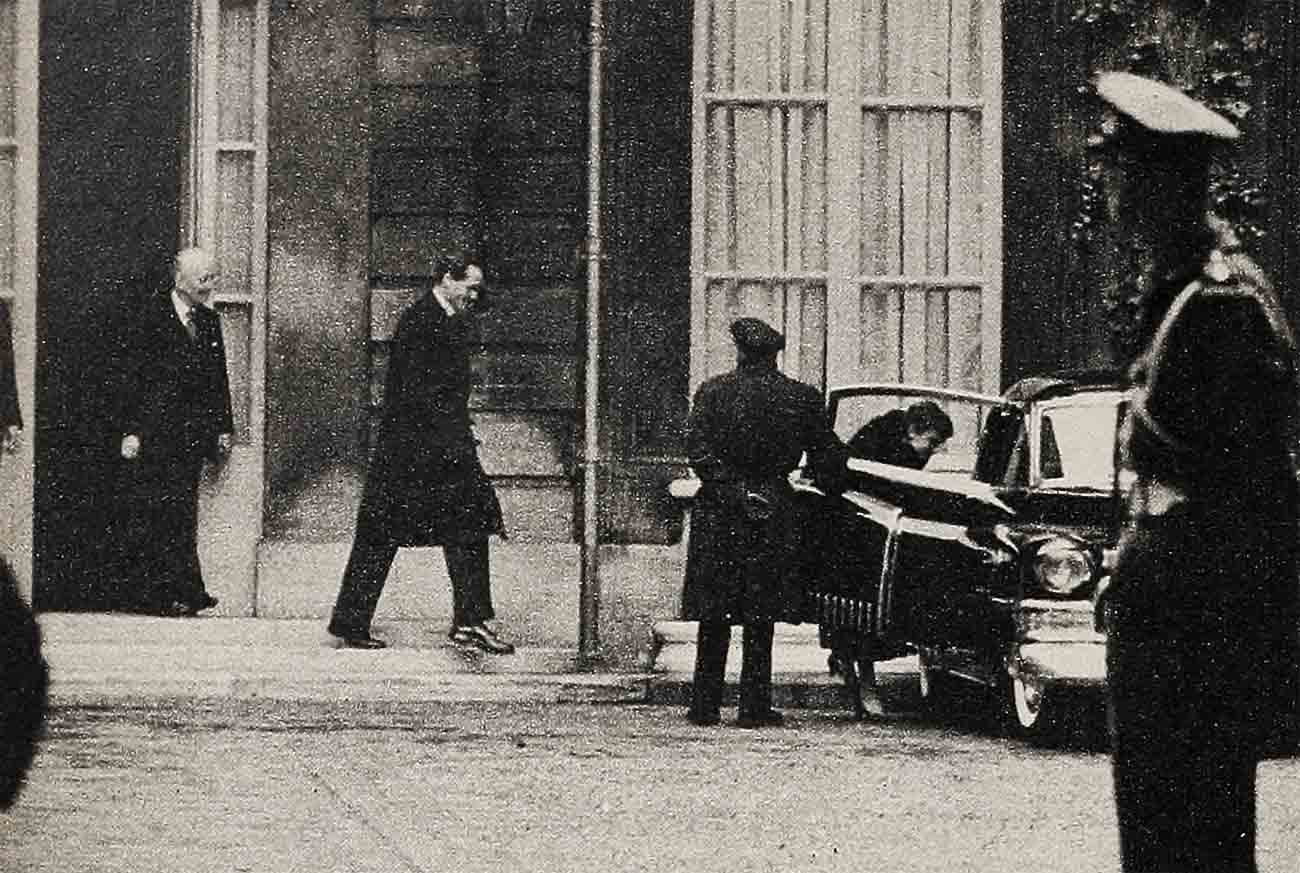
This she did for the sake of Paramount and Sabrina, then playing to capacity audiences at seven Paris movie houses. But that was absolutely all she intended to do.
The hide-and-seek routine she used the rest of the time was aided and abetted by the Ritz Hotel, which assigned ten men to patrol the entry to Room 24; by restaurant keepers who threatened mayhem to cameramen who invaded her privacy; by all the persons she visited; and especially by Mel Ferrer, who performed his duty with unconcealed relish. But the photographers never gave up.
Audrey and Mel landed on a Monday afternoon. They leaped into the Cadillac Paramount had sent and sped to the hotel. Their first appointment, after a quick change of clothes and a visit to the hotel cashier, was for cocktails in the apartment of John Nathan, head of Paramount for Europe. Right behind them as they drove to Avenue Foch came several cars, filled with reporters and photographers.
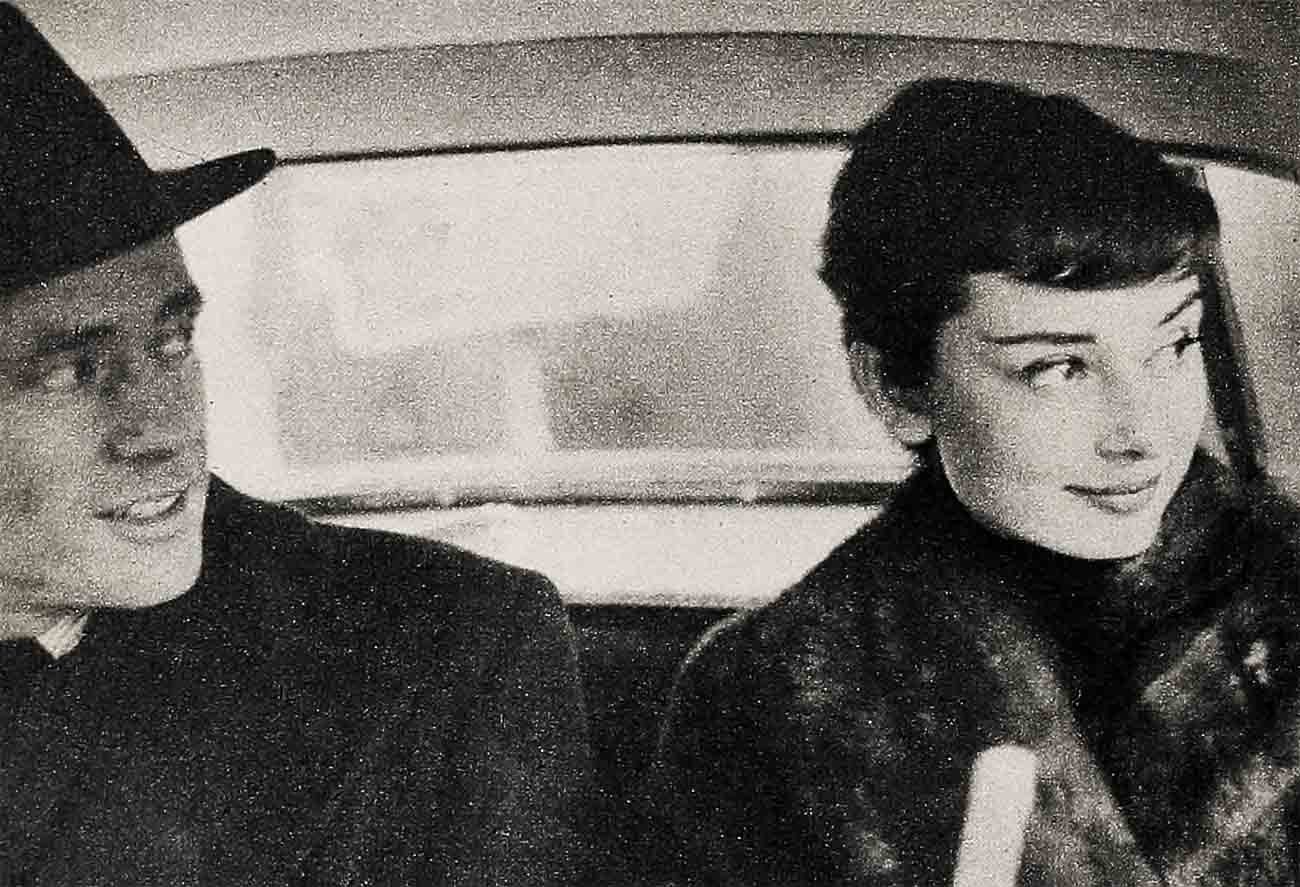
Audrey seemed to be amused by the frustrated efforts to get pictures of her. She often turned to glance at the press cars following her, grinned broadly and resumed her conversation.
From Nathan’s apartment, Audrey and Mel hurried to La Crémaillére restaurant for dinner with New York Herald-Tribune columnist Art Buchwald. It was the only private interview Audrey gave—a fact the French press naturally resented, accusing her of favoritism.
While Mel gulped down a dozen oysters, half a chicken and a platter of crépes suzettes, Audrey, who claims she stays thin by “eating a little and working a lot,” played with a bowl of consommé, a slice of salmon and a dish of ice cream. Photographers were not admitted.
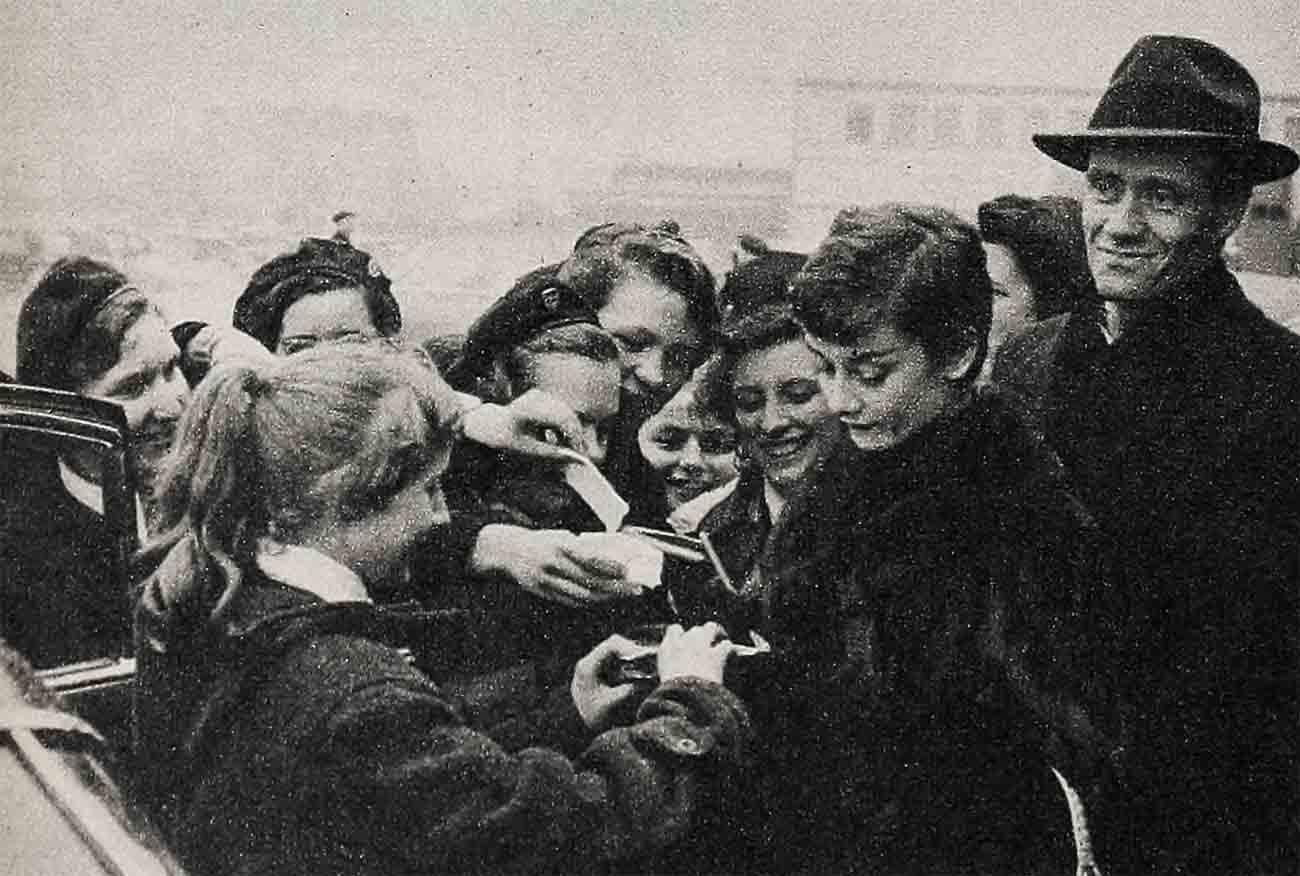
The next day Audrey attended a private showing of Sabrina, with French dialogue dubbed in, made a radio broadcast and appeared at the press conference, which disclosed nothing more exciting than the fact that she “hopes one day to have a family.” She denied the rumors that she was pregnant. The rumors continued steadily, however, and she has, as steadily, denied them.
While the press was busy in the Ritz salons below, one enterprising American photographer mounted to Audrey’s rooms, hoping for shots of her return from the conference. Ferrer was there. He was furious at such audacity and called the manager, who seemed to be prepared to throw out the photographer by force. It was mentioned that this might occasion extremely unfavorable publicity for his hotel in the American press. He calmed down. But permission was not given.
That evening Audrey and Mel dined with Ray Ventura, who produced Monte Carlo Baby, the film Audrey was making They went to Berkeley’s, a restaurant on the Rond-Point, whose policy is cooperation with the press. But not this evening.
At Berkeley’s, Audrey asked the chef if she could make the crépes suzettes. He willingly obliged. The photographers wrung their hands when they learned what ideal pictures they had missed. Audrey told Ventura that she had decided not to accept a role in his Bonjour Tristesse. “I don’t want to play it because the lead is not a sympathetic character.”
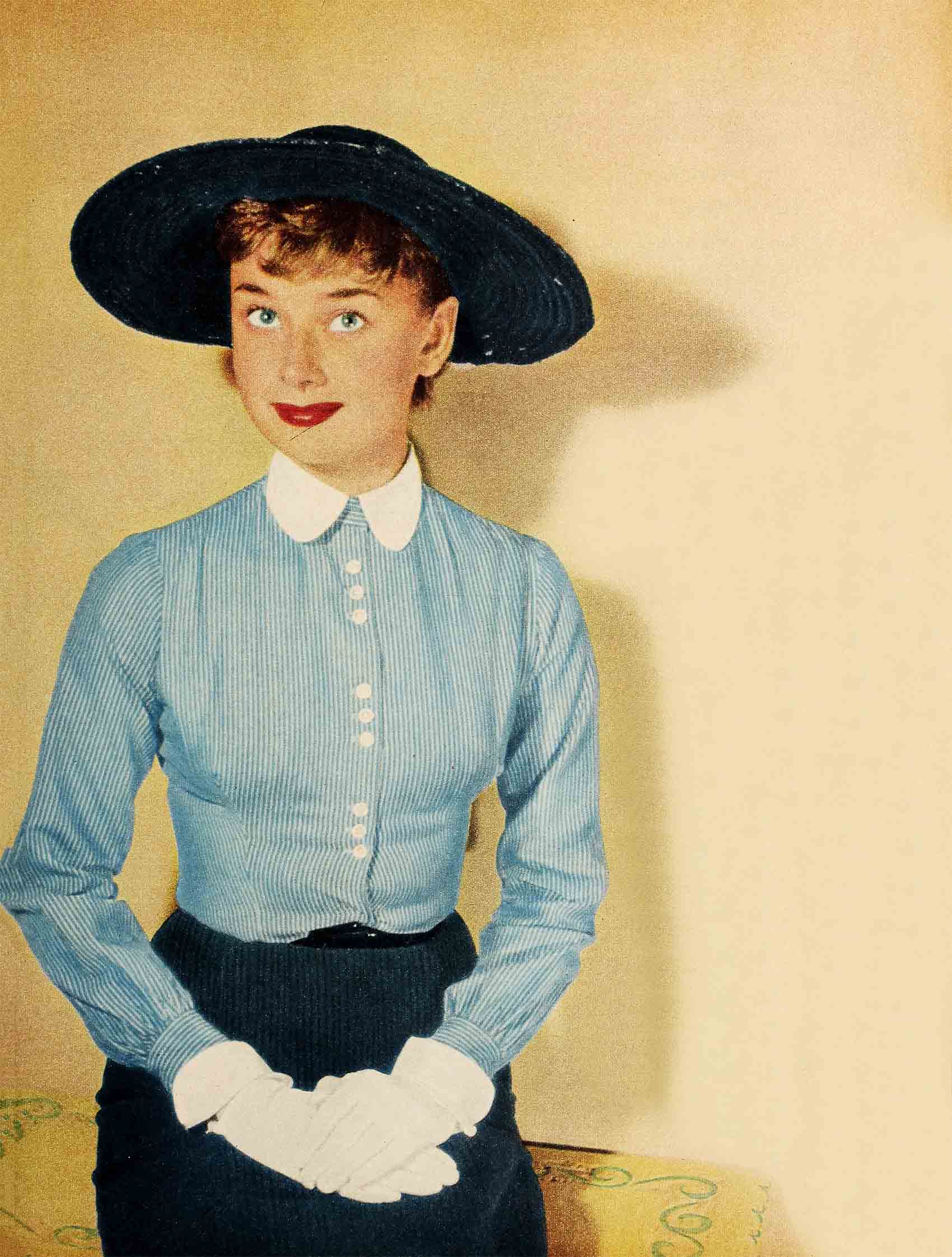
Wednesday she and Mel entertained Gigi director Raymond Rauleau at their hotel for cocktails. Around seven-thirty P.M. Rouleau informed lensmen waiting in the lobby that there was no reason for them to hang around—the Ferrers were eating in their rooms. The chauffeur of the Cadillac told reporters that he wouldn’t be needed that evening, so he was going to put the car away. He drove away—to a back entrance of the Ritz.
The skeptical reporters followed the Cadillac. And saw Audrey and Mel racing to it from a side service entrance.
Just at that moment a Buick convertible coming from the opposite end of the street stopped dead. From it leaped Jean Pierre Aumont, who had recognized Audrey and Mel. He left his car parked in the center of the street, tying up traffic on both lanes, while they chatted. Photographers tried to snap them, but Audrey withdrew into the shadows of the car.
Once, she allowed a photograph—to Paris-Match, the French equivalent of Life. It was taken at the apartment of the late Colette, at the urging of Colette’s husband, who was a personal friend of the photographer. Actually, it was this need to use personal contacts and cops-and-robbers techniques to out-maneuver Audrey that aroused real anger.
But at the Dutch Embassy an incident occurred which became a minor scandal. Three guards had been assigned the task of keeping everyone away while Audrey was there. This ban included Dutch citizens, who were forbidden to enter the grounds of their own Embassy, because Audrey Hepburn was lunching there. The affair is even now being discussed in important circles in The Hague.
The French press, for whom the chase became more a matter of principle than anything else, ended by giving Audrey very little space. “I guess she took her part as a princess in Roman Holiday seriously.” “She ought to take a few hints from a real princess—Margaret!”
Some people are saying that the grand amour is more on her side than his. She signs letters, “Audrey Ferrer,” and is always grabbing people to say, “Have you met my husband?” Mel responds with what seems to be an embarrassed air.
The projected filming of Ondine, with Mel and Audrey co-starring, has been canceled. But there will no doubt be others. Ferrer did tell friends in Paris, “I don’t think it would be a good idea for us to play together too often. I’ll accept only those roles for which I’m ideally suited.” But there probably will be a goodly number of those.
At this time, the French press can think of some roles for which both Mel and Audrey would be ideally suited. They would occur in films in which the dialogue reads frequently, “They went that-a-way!”
THE END
—BY COLETTE MAURIER
It is a quote. MODERN SCREEN MAGAZINE JUNE 1955




